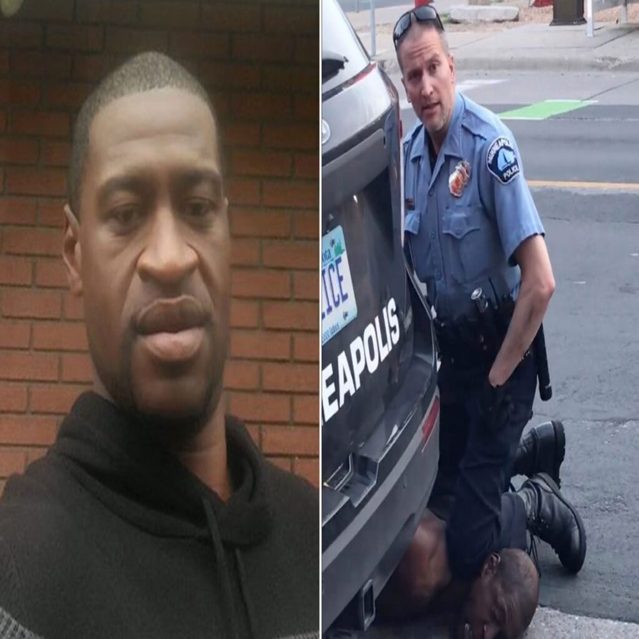Two African-Americans, two big cities, two videos, two verdicts.
There are too many similarities in the play of history, but fortunately the end result is different.
On the afternoon of April 20, after nearly three weeks in court, a jury of 12 found Drake Shawan, the police officer who killed George Floyd, guilty of second-degree murder, third-degree murder and second-degree manslaughter.
A year ago, a police officer in Minneapolis, Minnesota, knelt on the neck of George Floyd, a 46-year-old African-American man, for 9 minutes and 29 seconds, and Floyd was crushed to death on the ground, gasping loudly and repeatedly, “I can’t breathe.” The video, filmed by roadside bystanders, went viral, sparking sustained protests across the United States and around the world over police brutality and racial injustice.
U.S. President Joe Biden canceled an afternoon speech and gathered in the Oval Office with Vice President Harris and White House aides to await the verdict. Immediately after the verdict was announced, the White House held a news conference, and both Biden and Harris expressed relief.
As the verdict was announced, hundreds of people outside the courthouse erupted in cheers, with scenes in cities across the country, with car horns honking and demonstrators blocking traffic and chanting “George Floyd” and “All three sins.” The cheers were particularly notable at the intersection of Florence Boulevard and Normandy Avenue, the famous street in Los Angeles, California.
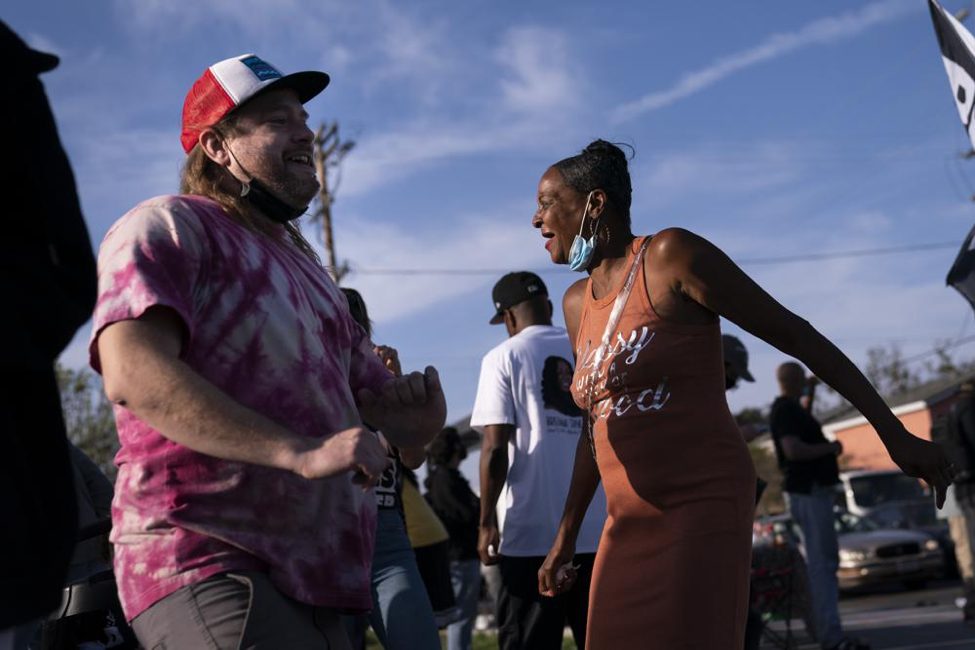
Thirty years ago, a Floyd-like African-American man, 25-year-old Rodney King, was beaten with a baton by four Los Angeles police officers, a scene captured by residents living nearby on newly purchased cameras and sold to television stations, sparking a national outcry against the officers involved.
A year later, on 29 April 1992, the jury found four police officers “not guilty”. The acquittal sparked protests at the intersection where thousands of African-Americans and Latinos gathered in Los Angeles, turning into a deadly riot in U.S. history.
Rodney King in Los Angeles
If it was today, plumber George Holliday used a camera to film a group of police officers beating an African-American man on the second-floor balcony of his apartment, and it could only be uploaded to social media to get attention. But 30 years ago, in 1991, the internet age had not yet arrived.
In the middle of the night on 3 March 1991, Holliday was awakened by the noise of police cars and helicopters and ran to the balcony to see some police officers beating people. He took out the camera he had just bought and filmed a video for a total of 81 seconds. Of course, that’s not the whole story. “When I got to the balcony, they were already hitting him,” Holliday said in the news. ”
The incident began when Rodney King, a 25-year-old African-American man, was driving with two passengers on the East Bay Shore Freeway. The female patrolman, Singh, found it and drove after him.
King was on two-year parole for robbery, afraid of being caught by the police plus a class, so he ran desperately to try to escape. Singh chased, and called for support, more than 20 police cars surrounded by interception, helicopters in the sky roaring, Jin panicked, drove into a small road in the city, but a large truck in front of the road has blocked the road.
Singh jumped out of the police car and drank to get the three men out of the car. Kim’s two African-American companions were so frightened that they put their hands behind their backs according to the rules.
But Kim, with his wine, did not want to hold his hands, deliberately procrastinating, and even making some provocative moves towards Singh, who was slowly approaching. A police officer, Kong, stopped Singh and instead ordered Powell and four other white police officers to subdue King. Kim’s physique was so strong that four police officers failed to subdue him.
After the warning was invalid, used a high-voltage baton on King, but King was knocked down twice in a row and immediately stood up and pounced on Powell. Powell hit King in the head and body with a metal baton, while two other officers kicked him with his boots. But King refused to obey orders until the police hit the 56th baton. The police then stopped beating him, handcuffed King and sent him to the hospital in an ambulance for emergency treatment.
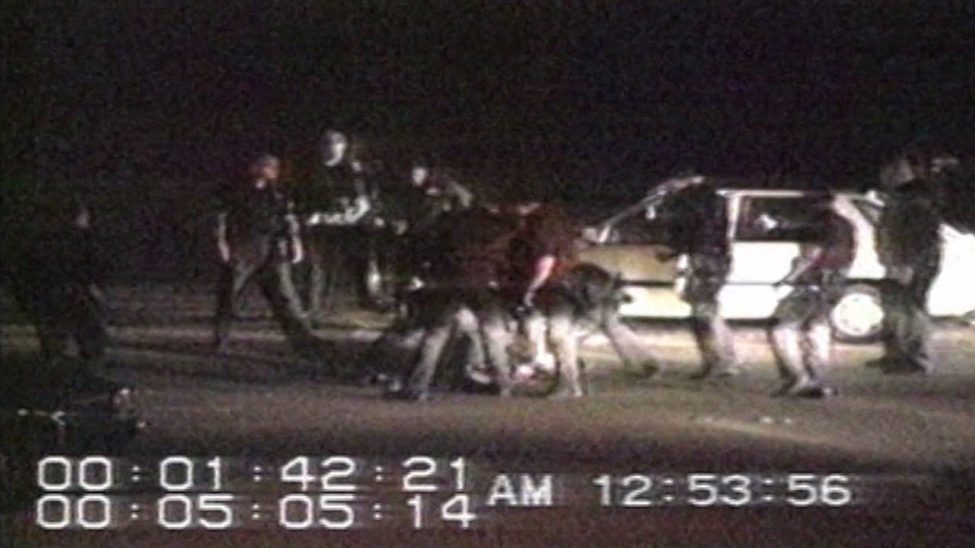
However, holliday’s boot on the second floor in the distance came when King pounced on the police. The worst images of the police beating Kim with batons and kicking him with police boots were recorded, but no escape shots were captured in front of them.
In 1991, when there was no social media, Holliday didn’t know what to do. The next day, he contacted KTLA, a local television station in Los Angeles, and drove the material himself to get paid $500. KLTA’s editors edited the 81-second video into 68 seconds of news at 22 p.m., while making the cut available to ABC, NBC, CBS and CNN, and repeated it hundreds of times in two weeks, making King’s beating the world’s number one news story.
African-Americans are familiar with police brutality, but watching it on television, the intense visual impact directly ignited public anger. It was no different from the anger of seeing Floyd kneeling under Shawan’s knees for more than nine minutes.
As a result, the police law enforcement incident, triggered by the parolee’s speeding and drunken resisting arrest, turned into a globally shocking human rights abuse by white police officers who beat unarmed African-Americans for no reason in the news media.
King sued the Los Angeles Police Department for criminal offenses, and four white officers were arrested. King is also suing the city of Los Angeles for $56 million in personal injury damages for an algorithm worth millions of dollars per baton.
The acquittal sparked riots in Los Angeles
At the end of 1991, as a result of extensive media coverage, the trial judge in the criminal case, fearing an impact on the fairness of the trial, moved the trial site to Simi Valley.
It is home to police officers in the Los Angeles area, where whites make up 60 percent of the population and African-Americans make up only 3 percent. Clearly, the jury selected in this area is more favourable to the accused.
The jury included 10 white men and two people of color. They saw the full video during the trial, including King resisting arrest and trying to storm the police, and they were impressed by the defense of the defendant’s lawyers based on the video.
The lawyer said that after King was knocked to the ground, he kept rolling and repeatedly tried to stand up and ignore the officer’s repeated drinking orders, which led to excessive law enforcement by the police. If you look closely at the slow footage of the video, you can see that 23 of the 56 batons that hit Gold in the rain were empty and could not be counted at all. But the content was not reported in the media because of the court’s injunction, and the public was unaware of it.
In April 1992, a jury in the District Court found four police officers not guilty (a charge of one count against Officer Powell is pending). Just two hours later, more than a thousand people gathered at the intersection of Florence Avenue and Normandy Avenue, and the blaze raged around Los Angeles, with black smoke and gunfire, many of them looting and rushing into shops.
The riots lasted four days and affected several U.S. cities, including Las Vegas, San Francisco, New York, Seattle and Chicago. Then-President George W. Bush had to mobilize about 10,000 Members of the California National Guard and thousands of U.S. Army and Marines into Los Angeles to quell the unrest. According to statistics, the riot killed more than 60 people, about 600 arson incidents, nearly 10,000 people were arrested, property damage of about 800 million to 1 billion U.S. dollars.
Prosecute again
1992 was an election year in the United States. In an effort to calm things down as quickly as possible, George W. Bush announced that the federal government would re-indict four police officers who had been acquitted by a California District Court jury on criminal charges of violating federal civil rights laws. The federal government fears another acquittal could spark unrest of African descent across the country. A year later, a small jury in federal district court found two people guilty and two not guilty.
But then the sentencing process began to stir up again. Criminal offenders who violate federal civil rights laws are punishable by at least six years in prison under federal regulations and practice, but a federal district court judge sentenced only two police officers to two-and-a-half years in prison. Civil rights groups across the country have urged the federal Justice Department to appeal to the 9th U.S. Circuit Court of Appeals, which administers the California region.
In April 1994, King won a civil damages case in state court, receiving damages totalling $3.8 million. The 9th Circuit, for its part, ruled that the federal district court had given too light a sentence to the convicted police officer, and ordered a re-sentencing and an increase in the sentence. The two police officers involved, who had been dragged into debt by high legal fees, decided to take the case to the Federal Supreme Court in the face of heavy fines.
In June 1996, the Federal Supreme Court ruled 9-0 that the unlawful beating by the police was related to King’s refusal to arrest, overturning the decision of the Federal Court of Appeal to increase the sentence of the police officers involved.
The sensational Rodney King case has finally come to an end.
This time pray for the “right” verdict
For many who have experienced the Los Angeles riots, 30 years on, the U.S. police system has had limited success, the media continues to play the role of outrage and fuel, and similar stories have been repeated.
“When I saw what happened in Minneapolis, I was more like going back to Los Angeles in 1992, and it was like revisiting history,” said Zev Jaroslawski, then a Los Angeles city councilman and now 72. ”
After Floyd’s family received a $27 million settlement from the city of Minneapolis, will Shawan’s lawyers ask for a stay of the trial and a change of venue, which could be the second “Simi Valley”? Will there be another acquittal?
The nine-minute video of Floyd’s violent enforcement was complete, and because of advances in technology, police officers’ body cameras, roadside surveillance, and so on provided multiple angles of video rendering, more complete and comprehensive than Romney King’s 81-second video. In the United States, however, the likelihood of acquittal by a police officer is much greater than the likelihood of a conviction.
A new study published by the Police Integrity Research Group at Bowling Green State University in Ohio shows that between 2015 and 2019, 104 officers were fatally shot and charged with murder or manslaughter, but only 35 were convicted, only four of whom were convicted of murder and 18 were convicted of manslaughter, while others faced lower charges or were acquitted.
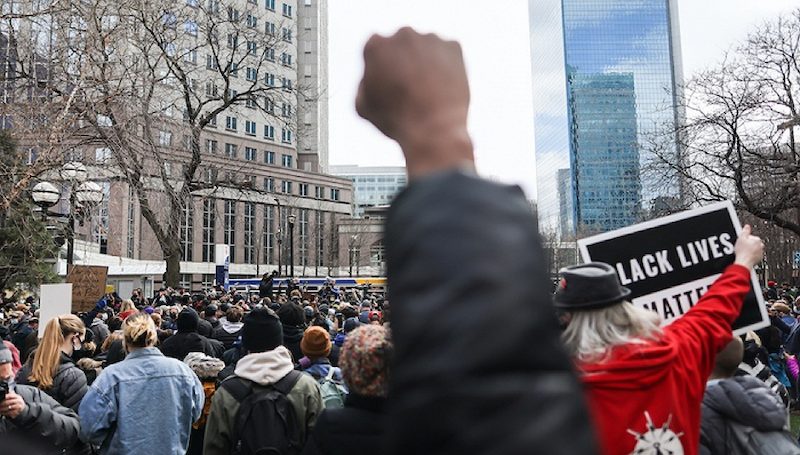
Compared with the members of the Rodney King case, the Freud case has more members, consisting of 6 white people, 4 people of African descent, and 2 people of multiracial origin. When the jury was quarantined, Biden called the Freud family: “I pray that the court will make the correct verdict. I think this (evidence) is overwhelming.”
This wound of police abuse of violence and racial discrimination that was torn apart by Rodney King’s case is far from healed. Instead, it may be torn apart again by the verdict in the George Floyd case.
Fortunately, the “guilty” verdict announced by the jury gave the United States a “sigh of relief.” This judgment is considered a “critical moment” and “historical moment” in the United States, and it demonstrates some progress in the issue of racial discrimination in American society.
Race has a long way to go
However, it must be faced that such progress may be limited.
In the wake of the Rotini King case, then-Los Angeles Mayor Tom Bradley called for a commission to investigate whether the police system was systematically racist, chaired by William Christopher, who later served as secretary of state in the Clinton administration.
“Rodney King has refocused public attention on long-standing complaints from African-Americans, Latinos, and Asians,” the Christopher Commission said in a report that interviewed hundreds of police officers. They complain that Los Angeles police treat minorities differently from whites, often using disrespectful and abusive language, and use unnecessary intrusive practices in dealing with minorities, such as a tendency to ‘face down’ and excessive use of force. ”
According to the Panel, only a small proportion of public complaints of excessive use of force by the police have been dealt with, that repeated excessive use of force by the police has not been stopped internally and that dozens of police officers who have received between 4 and 16 complaints continue to work. There is bias even in the police force, where white police officers sometimes use insulting terms to refer to Latino, African-American, and Asian-American colleagues.
As a result, the commission’s report concluded that the Los Angeles police did discriminate systematically in the way they treated different races.
On April 21, the day after Floyd’s guilty verdict, U.S. Attorney General Merrick Garland announced an investigation into the Minneapolis, Minnesota, and Minneapolis police departments. The investigation also focused on whether the police used excessive force and differed approaches to law enforcement by different ethnic groups.
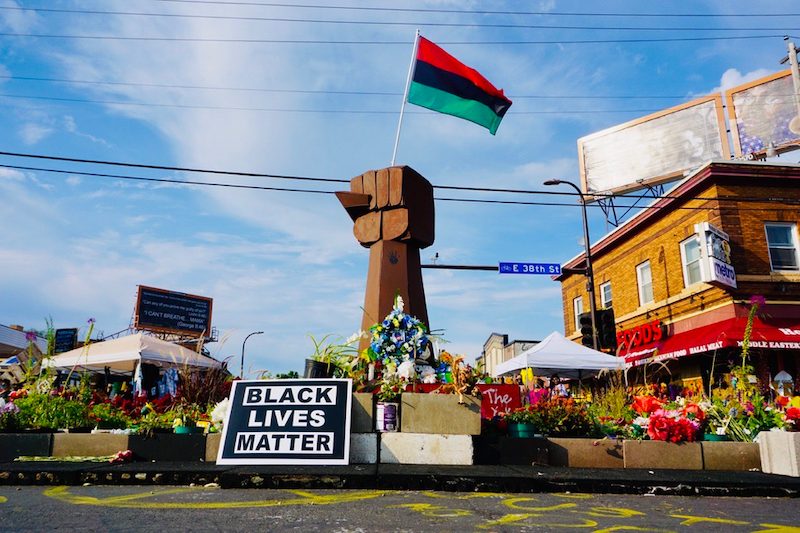
After 30 years, these problems have only changed time and place, re-enacted by different characters. As a result, the Floyd verdict is clearly far from enough to remove the deep-seated “stain” of racial discrimination in the United States. Racial inequality has been a problem for a long time, for African Americans and people of color in the United States, and for all Americans.
Race has a long way to go, and America may be relieved too early!


